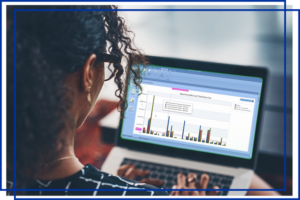How to Have a Smooth Software Transition
…a guide for users and those who manage them.
First off, let’s recognize something. Transitioning to new software is a BIG. DEAL. for everyone involved.
For stakeholders, it’s the price attached.
For managers and directors, it’s the productivity of their team.
For the software vendor, it’s their reputation.
And for users…well…where do we begin?!
You can find a lot of advice on the best way to implement new software but much of what is offered is geared toward decision-makers, implementation teams, and IT. But what about the step in between committing to new software and implementation? And what about the one crucial element missing from this equation…the one that often gets ignored—the users?
Where are the guides for a software transition plan for those who will be using the software?
The paths to picking out new software are plenty. Though there are many formulas written for how to choose the right software for your company—we’ve written a few ourselves—we also know that formulas and how-to guides don’t work for everyone.
Exploring new software begins at the bottom. It begins at the top. And it begins everywhere else in between. Either way, purchasing and using new software requires buy-in (literally and figuratively) for all involved for the new software to be successful.
Once the choice has been made and a contract is signed, it’s time to start the transition…whether it be a few weeks, a few months, or even a year, there are steps you can take to make the transition as seamless and as smoothly as possible:
- Getting buy-in
- Communicate
- Set expectations
- Utilize the vendor’s avenues for training
- Build trust
Getting Buy-In
Out with the old, in with the new! It’s exciting to incorporate improved processes in your workflows. Completing tasks quicker and easier with less error is something everyone can get behind. But that doesn’t mean your path to the light at the end of the tunnel doesn’t involve a darkened hallway.
Transitioning from one software to another can be messy but it doesn’t have to be. Don’t let the “if it ain’t broke, don’t fix it” attitude get in the way of your company’s progress. The first step in the software transition process is expressing and listening to concerns. Data loss, the time it takes to learn the new platform, how easy it will be to work in the new platform…you’re held accountable to completing estimates on time and done right. The decision to buy new software wasn’t taken lightly and if the new software you're switching to didn’t help you complete your estimates in a timely and accurate manner, then the decision wouldn’t have been made.
Rest assured, life with the new software will be easier.
Getting buy-in won’t be easy without…
Communication
Preconstruction directors and managers need to know what the business’ long-term plan is for the preconstruction technology you’re implementing. This includes weighing the risks if you were to choose not to switch. Michael Boren, Beck Technology’s Chief Technology Officer says, “Know the cost of staying where you are at and communicate that to everyone involved—the risk, actual dollars, lost opportunities, inability to compete, and inefficient workflows.”
Define your goals, define how you will measure success, and set expectations early. Clearly communicate with everyone who will be working with the new software these expectations and goals.
Honest and open communication with the team increases buy-in, lays a foundation for the team’s future success, and eliminates confusion in expectations.
 A smooth software transition isn't as difficult as you think.
A smooth software transition isn't as difficult as you think.Set Expectations
The new tool is not the old tool—especially if you’re using unsupported and outdated MC2. Things will function differently and there will be a learning curve. Expect to have reservations about any software change. You and anyone on the team might feel like shooting down the idea of switching to new software; however, keep the overall goal in mind here. Layout the expectations of the user’s involvement during implementation and assure them training will accompany implementation.
Utilize the Vendor’s Avenues for Training
Unfortunately, some software doesn’t come with training and ongoing support. A software vendor’s success rides on the success of their clients, so to outsource a training specialist or move someone inside the company to learn the software and then train the others is a costly endeavor.
That is why it is so important to choose your software vendor carefully.
Find a vendor that treats you like a partner rather than just dollar signs and work together to develop an implementation and training plan.
Working on developing a partnership instead of a supplier/buyer relationship will help build trust between both parties.
Building Trust
Taking the advice on these five steps to software transition is laying the foundation to building trust. Not only trust in that the software delivers, but the preconstruction team’s trust in stakeholder’s decisions, and their trust that the software vendor will be there to support them when needed.
Meeting regularly with your vendor through the transition phase to discuss adjustments needed when you discover new information ultimately helps them help you and continues the development of a mutual trust relationship and makes the next step—implementation—go smoother.
In summary:
- Expect push-back but express and recognize concerns
- Align your goals and communicate the reasons why the new software is necessary and explain the risk involved if you continue with your old software
- Know how you will measure success and set expectations
- Expect that the transition won’t happen overnight, and you will have to do some work during implementation
- Treat your software vendor like a partner and collaborate on timelines, needs, and issues as they arise
Learn the best practices for implementing new construction estimating software.

-1.png?width=112&height=112&name=image%20(4)-1.png)















